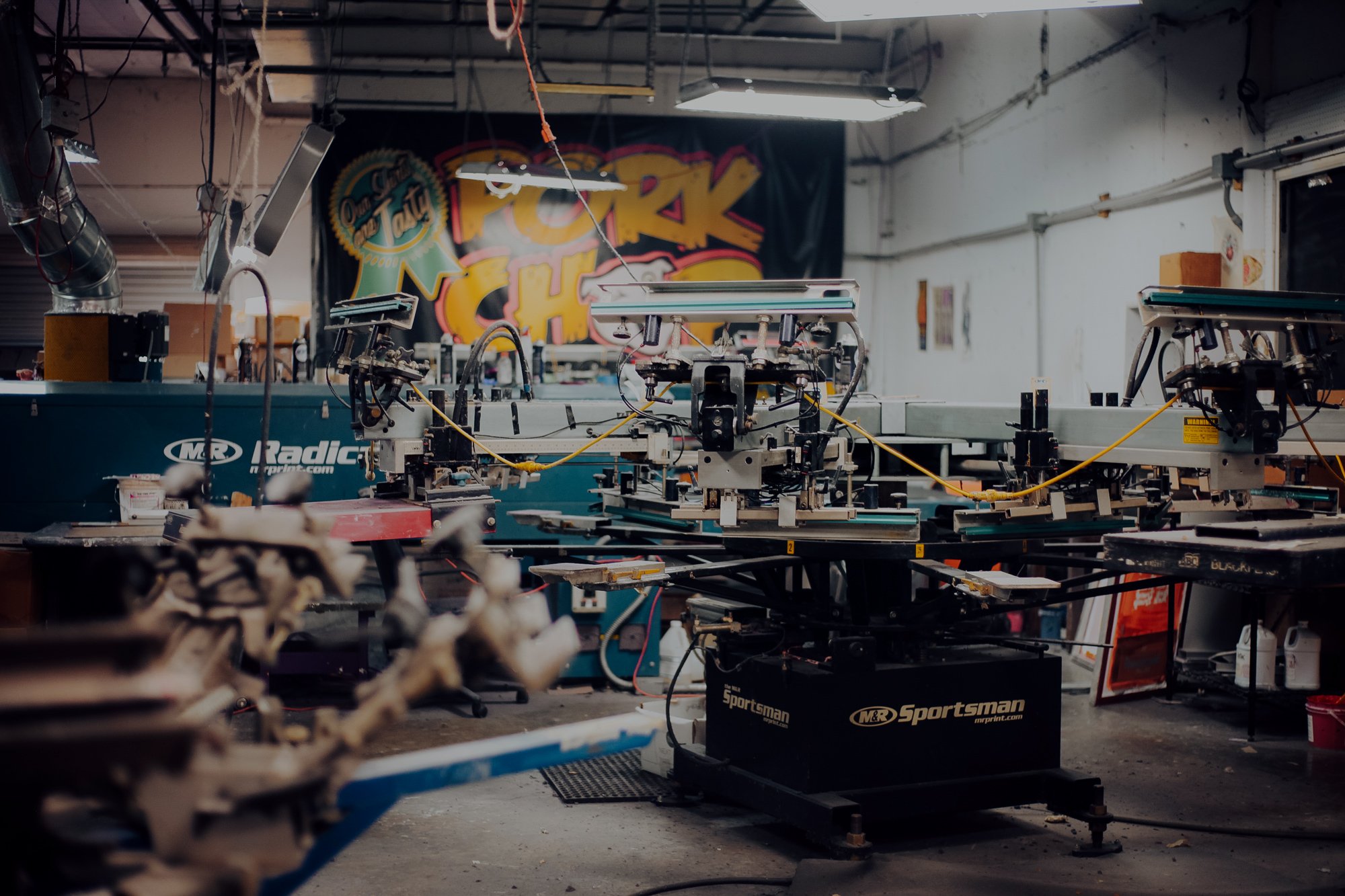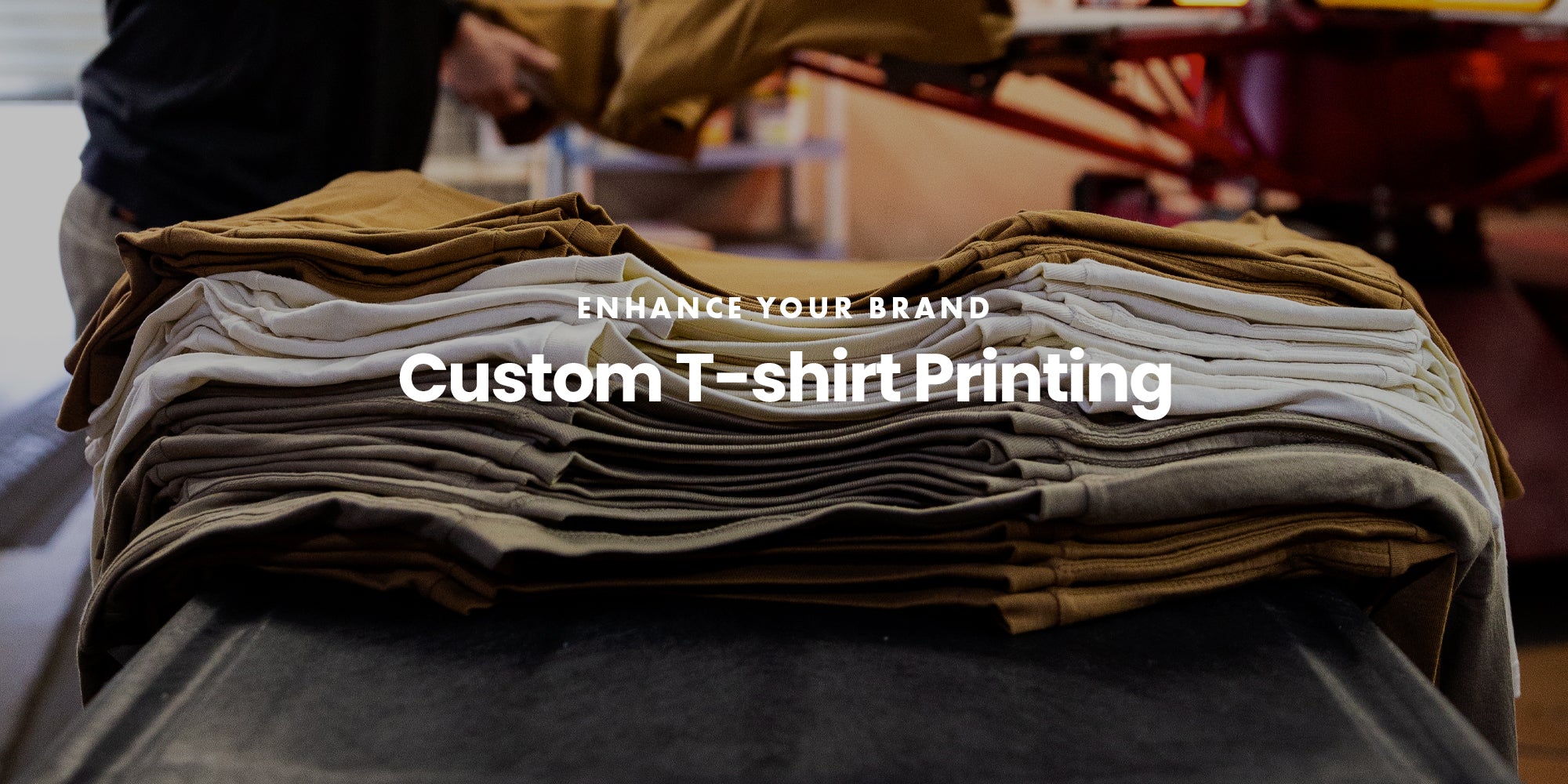Affordable Custom Screen Printing Services for Small Businesses
Affordable Custom Screen Printing Services for Small Businesses
Blog Article
Display Printing Uncovered: Every Little Thing You Need to Find Out About Tee and Garment Printing Methods
Screen printing is an interesting technique that incorporates art with strategy, supplying unlimited possibilities for creative thinking. Ready to check out the vital aspects that make display printing an art form?
The Fundamentals of Screen Printing: How It Works
When you dive right into screen printing, you'll uncover it's both an art and a science. At its core, display printing involves creating a stencil, or display, that allows ink to travel through only in specific areas (screen printing kit). You start by choosing your style and preparing your display with a light-sensitive emulsion. Once you subject this solution to light, it hardens, leaving your design as a negative space.
Following, you'll blend your inks and prepare your printing surface area. Position the screen over the fabric, after that utilize a squeegee to press ink with the screen onto the garment. This procedure requires accuracy, as you want clear, lively prints. After printing, you'll treat the ink with warm, ensuring it sticks to the material and lasts via cleans. Each step is essential, and grasping them will boost your screen printing abilities, changing basic garments right into distinct, meaningful pieces.
Types of Display Printing Techniques
When you comprehend the essentials of screen printing, it's time to check out the numerous strategies that can boost your styles. One popular method is conventional screen printing, where ink is pressed with a stenciled screen. This technique is terrific for strong, vibrant shades. There's water-based ink printing, which supplies a softer feel and is environment-friendly, yet it calls for a various method to healing.
If you're going for great information, take into consideration discharge printing. This strategy eliminates dye from the textile, leaving a soft, vintage look. One more choice is plastisol printing, understood for its toughness and vivid colors, making it a preferred for several brand names. Finally, experiment with halftone printing to create gradient results and complex layouts. Each method has its special beauty, so don't wait to attempt them bent on find what fits your design best!
Necessary Equipment for Display Printing
To achieve stunning cause screen printing, having the appropriate devices is basic. You'll need a sturdy display printing framework, which holds the mesh that transfers your style onto the garment. Next off, invest in top notch mops; these are essential for applying ink equally across the screen. You'll additionally require an excellent exposure device to create your screens, along with a washout booth for cleansing them after use. A dependable warmth source, like a conveyor clothes dryer or heat press, is crucial for curing your prints to ensure long life. Don't fail to remember a correct work space, outfitted with tables and storage for your products. Protective equipment, such as gloves and masks, will maintain you safe from chemicals and inks. With the right tools, you'll be well on your way to generating professional-quality prints.
Selecting the Right Inks and Products
When picking inks and products for display printing, you require to consider the type of ink that functions ideal for your task. Consider fabric compatibility to assure your layouts look last and fantastic long. Check out environment-friendly ink alternatives to make your printing procedure extra lasting.
Kinds of Display Inks
Picking the appropriate display ink is vital for accomplishing dynamic, sturdy prints that fulfill your job's demands. There are a number of kinds of display inks to check out. Specialty inks, such as glow-in-the-dark or metallic, can add special effects to your layouts.

Material Compatibility Factors To Consider
Recognizing material compatibility is essential for attaining high-grade display prints, specifically since various products react distinctly to various inks. Constantly examine your inks on sample material to assure they stick appropriately and keep color stability. Furthermore, maintain in mind that fabric weight and appearance can affect the last end result, so picking the right ink and material combo is vital for your job's success.
Eco-Friendly Ink Options
Green inks are ending up being a popular selection for screen printers that desire to reduce their environmental influence while preserving high quality. When selecting inks, think about water-based inks, which are less dangerous and much easier to cleanse up contrasted to standard solvents.
Additionally, look for inks made from eco-friendly resources, such as soy or vegetable-based alternatives. By picking the best inks and products, you'll not just create sensational layouts however additionally add to a more lasting printing process. Make the switch, and your prints will show your commitment to the setting!
Preparing Your Design for Screen Printing

Submit Style Demands
To assure your style looks dynamic and sharp on material, you'll require to pay attention to file style demands for screen printing. Begin with vector files like AI or EPS, as they can be scaled without shedding top quality. If you make use of raster images, go with high-resolution documents, such as TIFF or PNG, preferably at 300 DPI. Stay clear of making use of JPEGs, as they can shed clearness when resized. Make sure your style has a clear history to protect against unwanted white edges on your prints. Keep shade settings in mind; CMYK is standard for display printing, so transform your RGB creates as necessary - screen printing kit. By adhering to these guidelines, you'll establish your art work up for a successful print.
Shade Splitting Up Methods
Shade separation is a necessary action in preparing your layout for screen printing, and understanding it can significantly improve your print Check Out Your URL top quality. You'll require to break your layout into individual shades, as each color requires a different display during printing. This accuracy not just ensures accurate shade depiction however additionally streamlines the printing procedure.
Resolution and Dimension
Accomplishing the very best results in screen printing starts with ensuring your layout has the ideal resolution and dimension. Ideally, your art work should go to the very least 300 DPI (dots per inch) for sharp, clear prints. Your final product might look amateur and pixelated. if you use reduced resolution.
When it involves dimension, think about the measurements of your print location. Style your art work to match the final print dimension, ideally producing it in the real measurements you'll be publishing. By doing this, you'll avoid any type of unexpected scaling problems.
Always examine your style in both vector and raster formats. Vector graphics can be scaled without losing quality, making them perfect for screen printing. Preparing properly will guarantee your style looks incredible on every garment!
Step-by-Step Screen Printing Process
Display printing is a vibrant procedure that allows you to produce lively styles on various surface areas. To begin, you'll require a display, solution, and your picked ink. First, prepare your display by cleansing it extensively. Next, apply the emulsion evenly and let it completely dry in a dark location. When completely dry, subject your screen to light with your design put on it, which will solidify the emulsion where the light hits, creating a pattern - screen printing kit.
After rinsing the unexposed solution, your screen prepares. Establish it up on your printing surface and align your garment beneath it. Put ink onto the display and utilize a squeegee to press the ink via the pattern onto the material. Raise the screen carefully and allow the print dry. Ultimately, treat the ink making use of this content heat to assure toughness. That's it! You have actually efficiently display published your layout.
Tips for Successful Display Printing Projects
While you're diving right into your screen printing tasks, bear in mind that preparation is essential to success. Beginning by collecting all your materials-- inks, garments, mops, and displays. A clean work area aids avoid unwanted mistakes, so clean before you start.
Next, validate your artwork is high-resolution and correctly sized for your garment. Test your navigate to this site display for correct exposure and tidy it completely to avoid smudges. When blending your inks, adhere to the supplier's guidelines to achieve the right consistency.
During printing, use even stress with your squeegee for consistent outcomes. Do not hurry; take your time to validate each print satisfies your criteria. After printing, let your garments dry totally prior to managing or packaging them.
Lastly, always maintain an example of your benefit future reference. By doing this, you can analyze your development and boost your techniques with time. Satisfied printing!

Often Asked Inquiries
How much time Does It Require To Establish a Display Printing Job?
Setting up a screen printing job typically takes around thirty minutes to an hour. You'll prepare the displays, mix inks, and adjust the press. The moment varies based upon intricacy and experience, so remain organized!
Can I Publish on Different Textile Keys In Using the Same Method?
Yes, you can publish on different textile kinds utilizing the same method, yet you'll need to readjust your inks and setups. Some textiles take in ink in different ways, so experimenting warranties the ideal outcomes for each material.
What Are Common Blunders to Stay Clear Of in Screen Printing?
When screen printing, stay clear of usual mistakes like using the incorrect ink, neglecting correct direct exposure times, or avoiding pre-press checks. Always test your setup and keep clean displays to guarantee quality outcomes each time.
How Can I Correctly Clean and Preserve My Display Printing Tools?
To correctly tidy and keep your screen printing equipment, you ought to routinely clean screens with ideal solvents, inspect squeegees for wear, and ensure all tools are stored completely dry and dust-free. Consistency protects against costly repairs and improves performance.
Is Display Printing Eco-friendly Compared to Various Other Techniques?
Display printing can be a lot more environmentally friendly than other approaches, especially if you utilize eco-conscious products and water-based inks. By picking lasting materials and methods, you minimize waste and minimize your effect on the world.
Display Printing Uncovered: Whatever You Required to Know Concerning Tee Shirt and Garment Printing Techniques
At its core, screen printing includes producing a stencil, or display, that enables ink to pass with only in specific areas. Placement the display over the material, then utilize a squeegee to push ink through the screen onto the garment. One preferred technique is conventional screen printing, where ink is pushed through a stenciled screen.When choosing inks and materials for display printing, you require to take right into account the kind of ink that works ideal for your job.
Report this page